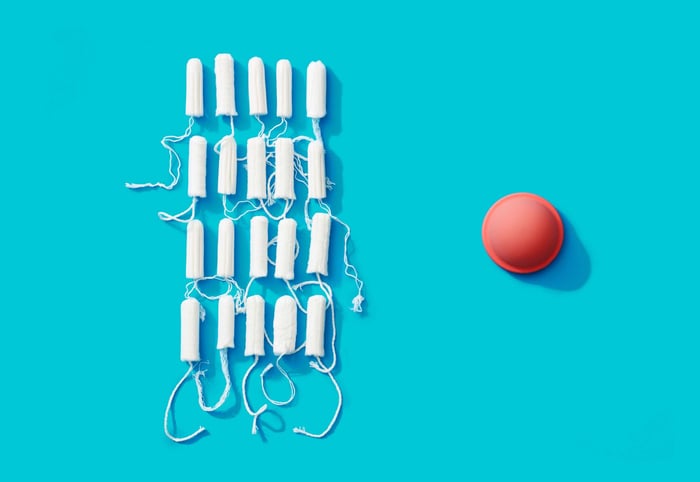No matter how long you have been menstruating for, you’ll know that the task of caring for your body, especially during your time of the month, never ends! Given that the average menstruator uses about 10,000 sanitary products in their lifetime, it is no surprise that the options available for menstrual care are equally varied (and overwhelming!).
With products galore, choosing what suits your body and needs can be confusing, at best. With this in mind, we hope to bring you some clarity and make your monthly decisions a little easier - in this blog post we explore the important differences between tampons and menstrual cups!
Absorption or Collection?
Tampons absorb menstrual blood, while menstrual cups collect it. While absorption may sound like less of a hassle, it makes it hard to keep track of your flow, and knowing your cycle’s specifics can help you plan better for your period days. Learn more about the importance of tracking your flow here.
More importantly, we should make sure we know what exactly we’re putting in our bodies! Over the years, tampons have been found to contain pesticide residue, paragons, and phthalates that mess with the body’s hormones.
Many types of cotton tampons have also been found with glyphosate, a cancer-causing herbicide. Seeing as the vagina is a highly absorbent space, we believe it’s our responsibility to take all preventative measures and protect it!
Hours of Protection
Depending on your flow and cycle, tampons need to be changed every 4-8 hours. For some, it may even be more frequently than this! In comparison, cups can provide you with coverage for much longer. The nixit menstrual disc is designed to be used for up to 12 hours at a time.
This means you can forget the hassle of changing tampons or emptying your cup in public, you can save this act for the comfort of your own home. Cups can hold up to 4 times as much fluid as a tampon. If you choose to opt for a cup, you won’t find yourself time checking, and gone are the days of stuffing tampons up your sleeves. The more durable your product, the less you have to worry about!
Waste
It’s no surprise that tampons are disposable, while the majority of menstrual cups are made to last. Once tampons have served their purpose, they can only be disposed of to end up in landfill. On the other hand, menstrual cups are designed to be emptied, reinserted and used cycle after cycle for years.
This National Geographic article dives into the scary truth behind the plastic consumption involved with tampons and pads. Warning, there are some scary facts highlighted, but we feel it important that you’re well informed on your decisions. In case you haven’t heard, unsustainable products are out and plastic-free living is in!
The materials that make it
As we mentioned earlier, tampons have been found to have trace amounts of chemicals, bleaches and fibers present, depending on which brand you opt for. Menstrual cups are made of latex rubber or silicone. We are proud to say that the nixit menstrual disc is made of 100% medical grade silicone.
Tampons also have a history of being linked to Toxic Shock Syndrome (TSS). Simply put, TSS is a serious health complication stemming from a bacterial infection and has been linked to the usage of tampons. Products free from bleach and chemicals have proved to be far safer. Also, your chances of contracting a UTI are far less when there are no foreign substances being put in your vagina!
Cost & Savings
Finally, let’s talk money. Tampons, on average, cost up to $150 per year, depending on your period’s flow and frequency. This Huffington Post article estimates that tampon users spend above $1700 in their lifetime, while this article suggests a whopping $4,752! While the exact cost suffered by each menstruator is unknown and variable, what is clear is the savings that menstrual cups offer.
Cups are a one-time purchase, costing between $20 and $50. If properly cared for, they are designed to last you several years! nixit is $49 USD and designed to last you 5 years - that works out to be less than $10 per year!
While the insertion and removal of a cup might take some getting used to, we believe it is worth the effort. Reduced cost, less waste, and no chemicals seems like the right choice to us.
If you feel it’s the right decision for your body, we recommend making the switch, we believe it’ll be worth your while.





